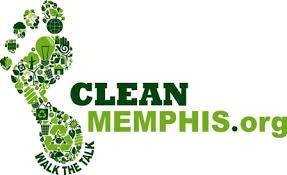The weekly question in our suggestion box generated a lot of interest, not to mention some really perceptive comments. That’s as it should be, because all of us need to be doing whatever it takes to revitalize Whitehaven.
Here’s the question:
If you had the power to take definitive actions to fight the abandonment and decline of Whitehaven, what would you do?
Here’s your answers, beginning with the always insightful Sherman:
You got to fix the zoning 1st as it is anything goes right now. If you can do that(!), then you should focus on the area’s strengths:
1) Elvis
2) Music Heritage
3) Southern Food (BBQ & soul food galore)
While Elvis is the easy anchor, you also have Al Green’s church, Furry Lewis’ grave, Hernando’s Hideway, Bad Bob’s, a gateway to Jerry Lee’s home in Hernando, Bar-Kays hqs, the Executive Inn, the Manhattan Club, etc. Not bad for one neighborhood! In fact, few neighborhoods in the world would have nearly as much of the music history/heritage this neighborhood has and none other has a Graceland. (You even have a satellite radio station broadcasting Memphis music 24/7–talk about an asset! How rare and convenient is that!) So, Elvis is the driver, but you got a lot more than the King going musically…
Then for food, you have A&R bbq, Marlowe’s, D’Bos, the original Memphis Krispy Kreme, Grandma’s, many tasty hot wings & fried chicken joints, etc. (Not to mention Payne’s, Coletta’s, Stein’s, Ellen’s BBQ, & several others in the adjacent neighborhood). Play this angle up: some of the best eating in the South (the whole country?) all at very reasonable prices.
You definitely need to spend some jack on urban design though (maps to locales/signage/historical markers. etc–all easily done, esp. with a visitors center at your main entrance point), because the unencumbered development from the ’60s til now has made one unaesthetically pleasing locale for sure.
If (when?) Sillerman makes his amphitheater across from Graceland, a festival (or festivals) celebrating the music (& food) of the neighborhood is a no brainer.
It’s a daunting task since the suburb is so massive, and it will take a lot of money to dress up what has taken almost 50 years to screw up, but you gotta go with the strengths. Basically you have an intl. embassy with an almost insatiable demand of national/intl. customers coming to a neighborhood replete with car dealers, industrial/corporate warehouses, mediocre strip malls, and fast food joints. They are coming despite the surroundings! Imagine if the surroundings had decent hotels, nicer streetscapes, & less crime!
No wonder Sillerman saw a bargain at $75 million plus stock.
Then there’s this from Stranger:
You start with two strips. The Elvis Presely Blvd corridor from Graceland up to I-55 with Brooks road being a “gateway” of sorts with the Visitors’ Center being there. The Visitors’ Center needs to expand. The car lots and junk places up and down the street need to be replaced with major hotels and nice restaurants.
The other strip is on Winchester from the Airport leading to Elvis Presley Blvd. To spark growth, both strips need some type of tax incentives as well as an aggressive plan to recruit more hotels and restaurants into that strip.
As a former Whitehaven resident, Dwayne weighs in with this:
I lived in Whitehaven for several years and have a lot of fondness for it. Many former residents like to nostalgically think of the old days and think of newer suburbs as the “new Whitehaven.”
The seeds of blight were there in the old days, however. Much of the Northern part was overbuilt with cheap apartments and there was too much haphazard commercial; and industrial development.
I would concentrate on closing and clearing multihousing and commercial activity that does not meet more stringent standards than exist currently. Current owners should be charged with the demolition costs. Much of this land should be used for large urban parkland in conjunction with a greenway along Nonconnah Creek.
Brooks Road needs to be cleaned up, so does Elvis Presley South to Graceland. You didn’t mention that Whitehaven and vicinity is the economic engine of the Memphis area. On the North end is Smith and Nephew and Medtronics. Of course the airport on the East and the many truck lines along Brooks and nearby plus Johnson Yards (RR) off of Horn Lake.
These businesses need to be organized and motivated to work together for the clean-up of the area.
As you said, Whitehaven has many nice settled neighborhoods. The part that is between EP and the tracks contains older homes, many of them pre WWII, that are ripe for renovation activities similar to that of Cooper Young and North Memphis in recent years. A program like this, with good marketing, can bring back young singles and marrieds and serve as a basis for rejuvenating the area. Also, the affordability should be used by enterprising real estate investors as a draw for young families.
All of these combined plus other imaginative ideas can bring Whitehaven back.
Another Whitehavener (Whitehavenite?), Renee, has this perspective:
Anyone here have one of those bumper stickers that says, “Whitehaven is my kind of Memphis”?!!
Everyone I’ve met who has lived in Whitehaven has some pride in it as a community, and those feelings are not necessarily rooted in the popularity of Elvis Presley, although it’s not surprising that Elvis chose to live in a soulful area like Whitehaven.
Though I understand the thought behind “bring Whitehaven back” the terminology is mis-oriented. Like other sprawling neighborhoods in Memphis, we will “go back to Whitehaven,” not the other way around. Whitehaven has some strength of its own for Memphis to connect to.
Having grown up there, I’ve always sensed the community there is very strong…and getting stronger. People willingly work together there – which really hints that they are an advanced community in some ways, if not in their physical environs. And Whitehaven is tough, in the sense that toughness is a resilience to breaking while being stressed. How does a ‘smart’ city connect the successful small pockets of strength within a community, in order to bring a larger community together?
It’s so exciting to see discussion about Whitehaven! Several years ago, the Whitehaven Community Development Corporation put strong efforts into the improvement of the ‘Elvis Presley Corridor’… is that organization still strong?
What are the current master projects going on in Whitehaven??
Sherman responded:
Elvis chose to live in “Whitehaven” because Graceland was out in the country on a two-lane highway — before the strip malls, fast food joints, car dealers, and, frankly, Whitehaven arrived.
If the community in current Whitehaven is so strong, how come it continues electing such weak representation that does nothing about the blight?
I agree with both stranger and Dwayne. Fixing the two strips is key. One problem that offers me cognitive dissonance is how do you reconcile two different, conflicting constituents (with a third being the neighborhood folks driving through to and from work each day): the transportation/truck industry tied to Fedex and the national/intl. visitors looking for a great vacation experience. More industry means more traffic & trucking; beautifying the area for more tourism means the trucking industry is less welcome.
I’m afraid that’s where you need to spend some money with neighborhood design experts like Frank Ricks, who solve these problems daily all over the city. I’m not sure this or any blog can solve those issues you present, but you do bring up an interesting topic for discussion.
One of our anonymous contributes says:
Use the broken windows theorty by cracking down on the small stuff (grafitti, loitering, panhandling, truancy).
Use eminant domain to penalize people who don’t maintain their property.
Offer some incentives to businesses to move to the area. Increase jobs and the population will follow.
Another anonymous reader suggests that the problems lie deeper:
The 3rd commentor has it completely backwards. Jobs follow people (educated, motivated, high quality workforce). Not vice versa. The jobs won’t go to Whitehaven, and in a larger sense, Memphis, because the work force is subpar. It’s the biggest reason Marion didn’t get the Toyota plant.
To improve things, we have to raise the quality of the workforce mainly through better education, and then jobs will come.
But it is a COMPLETE fallacy that people follow jobs. The reality is: jobs follow people.
In response, Dwayne emphasizes his point about the key Whitehaven employment base:
The third and fourth commentators neither realize that the Whitehaven area DOES have jobs now. In fact, it may have more jobs than any other part of Memphis if you include the Airport.
That includes high-tech jobs at Smith & Nephew and Medtronics and other employers. It’s also only a few minutes from most other employers in the City and across the State line.
As I stated in the earlier post, the blight needs to be cleaned up and the old but attractive homes and lots should be marketed for rejuvenation by young professionals, both white and black.
Anonymous clarifies:
4th commentator here; allow me the luxury of clarification. Of course Whitehaven has a lot of jobs. It is a huge employment center with Smith & Nephew, fedex, Medtronic, etc. However, I was commenting on the IDEA that creating jobs will bring people. That is patently false. If you want proof, then with all the jobs in Whitehaven (the aforementioned companies pay well above average wages) why aren’t people moving into Whitehaven in droves, black and white?
I would say the reason lies in both the areas you have pointed out (blight) as well as the old Memphis bugaboo, racism (I mean let’s face it, white flight killed Whitehaven, along with terrible development and zoning decisions). Now white flight and terrible planning decisions have killed HIckory Hill (Cordova’s next), although Whitehaven is at an advantage in that it has some great housing stock, which HH most certainly does not.
Bottom line, in most of Memphis, white people flee when black people migrate in.
A final anonymous writer seconded this thought:
I second the white flight theory.
That’s one of the reasons midtown has never declined. A lot of midtowners never left and it’s a place tolerant of diversity.
I feel sorry for those that had to see there beautiful area become the next victim of white flight suburbanization.
Thanks for the great discussion, and we remind you that we welcome any contributions about strategies for improving Memphis and its competitiveness. They don’t have to be on the question of the week, so feel free to send your commentary to tjones@smartcityconsulting.com.




